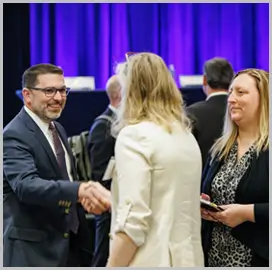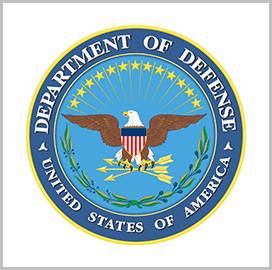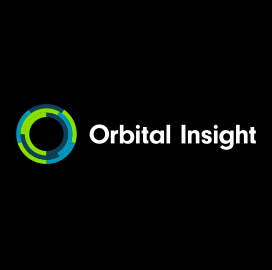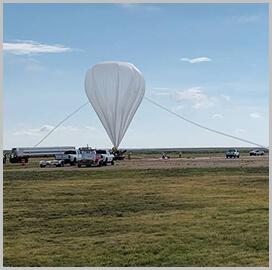
POC events are prime
places to network!
Breaking Down the 2024 CIO Summit Keynotes
Information technology now inarguably powers many if not all aspects of society — including the federal government. On April 17th, IT leaders from a range of agencies within the Departments of Defense, Energy and State and more gathered at the Hilton Alexandria Mark Center in Virginia for a deep dive on the technology strategies and digital modernization tactics being used to simplify processes and build a more efficient government. Like all Potomac Officers Club events, the 5th Annual CIO Summit was a hub for GovCon networking, important dialogues and impactful brand-building.
To browse a list of upcoming POC-hosted events, click here. We hope you’ll join us for our next big summit in about a month: the 2024 Cyber Summit on June 6. Register here!
Opening keynote fireside chat: Leslie Beavers, Principal Deputy Chief Information Officer at the Department of Defense, in conversation with Rob Carey, President of Cloudera Government Solutions
Primary takeaways:
- DOD Office of CIO currently working to update software modernization strategy
- Based on “what capabilities we and the department need in five years.”
- This year, DOD CIO looking at expanding cloud, zero trust, 5G/dynamic spectrum sharing, workforce, AI, data
- Improving cybersecurity within DIB:
- If we were to do the basics well, breaches wouldn’t happen
- Rule change made more companies eligible to work with DOD – “a big step in the right direction”
- NSA Cyber Center
- SBA Project Spectrum
- With regard to cloud and JWCC, tools need to be usable, sustainable, secure
- New plan – 3 tenets
- Accelerate cloud adoption
- Establish software development ecosystem
- Transform process of software development – build security in from beginning
- DOD has created over 50 software factories, some tailored to specific weapons systems, some more general.
Morning keynote: Doug Cossa, Chief Information Officer of the Defense Intelligence Agency
Primary takeaways:
- 5 DIA IT priority areas
- JWICS
- 80% refresh on JWICS
- Expand the Desktop Environment
- International systems
- Connectivity with allies
- Mise en place — cybersecurity at the beginning
- Workforce
- JWICS
- AI + LLMs should be used to uncover unknowns, not just for increasing efficiency of existing tasks
- DIA intends to make its data strategy its zero trust strategy
Morning keynote: Dr. Adele Merritt, Chief Information Officer, Office of the Director of National Intelligence
Primary takeaways:
- IC’s 5 IT focus areas
- Fortifying the mission through reliable and resilient digital foundation
- Assuring the mission through robust cybersecurity
- Enabling the mission through modern best practices and partnerships
- Enhancing the mission with data centricity
- Accelerating the mission with advanced technologies + workforce readiness
- IC focused on “how we are working to make our IT the most robust, resilient, agile network?”
- IC’s job is to disseminate analysis to policymakers, diplomats, defense leaders.
- Without IT, this would be done with pen & pencil
- Merritt views challenges of ever-evolving tech landscape through 3 vantages:
- What advances are going to impact our foundation, our core enterprise services?
- What amazing capabilities are around the corner that everybody’s going to be calling me about?
- What are these advances going to do to my legacy IT?
- Working to modernize without resorting to lowest common denominator
Afternoon keynote: Ann Dunkin, Chief Information Officer of the Department of Energy
Primary takeaways:
- DOE AI efforts:
- Named Chief AI and Chief Responsible AI Officer
- Using AI to improve environmental permitting outcomes and efficiency
- Developed DOE GenAI reference guide
- Cybersecurity is a risk to our ability to use AI
- Cyberthreats:
- Adversarial AI
- AI-enabled botnets
- Data poisoning
- Model theft
- AI bias and ethics
- 5 pillars of DOE Cybersecurity Strategy:
- Understanding risk
- Mitigating risk
- Enabling mission resilience
- Developing cyber workforce
- Protecting critical energy infrastructure
Closing keynote: Lt. Gen. Robert Skinner, Director of the Defense Information Systems Agency and Commander of the Joint Force Headquarters – DOD Information Network
Primary takeaways:
- Today, threat is higher than ever before
- What are we doing to gain a position of advantage?
- How to combat threats:
- Understand what’s going on
- Right sensors in the right place
- Leverage tech to understand posture, capabilities, security
- Hyperscaler security posture
- “We are only as good as the least secure part of the data stream”
- Fight organization + preparation
- New DISA Next five-year strategy = coming soon, 4 tenets are:
- Secure, operational, available capabilities
- Strategic C3
- Modernize for effectiveness
- Data

Category: Speaker News




